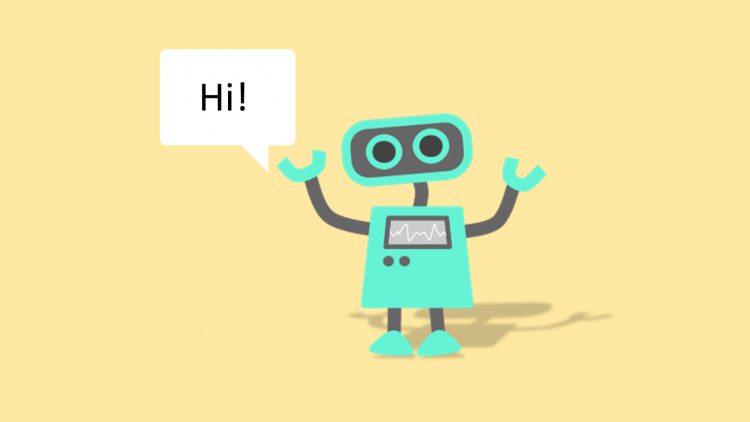
How to Build a Chatbot That Can Handle Your Social Media Customer Service
In an era where digital convenience and personalized experiences are not just appreciated but expected, customer service has taken a leap from traditional email and phone support to more immediate channels such as social media. Chatbots, powered by artificial intelligence and machine learning, play a crucial role in managing these customer service interactions, enabling businesses to provide real-time responses and support to their customers.
Understanding the Role of a Chatbot in Customer Service
Chatbots, driven by AI, have transformed the way businesses interact with their customers. They provide faster responses, operate 24/7, and can handle multiple inquiries simultaneously. This scalability and efficiency make them an ideal tool for customer service on social media platforms, where immediate response and constant availability are pivotal. Furthermore, chatbots are equipped with machine learning capabilities that allow them to learn and improve from every interaction, resulting in more accurate and tailored responses over time.
Planning for Your Chatbot
Before embarking on your chatbot journey, it’s essential to define its purpose. Identify the most common customer inquiries and determine how a chatbot can best address them. Set measurable goals for your chatbot, such as reducing response times, increasing customer satisfaction, or handling a specific percentage of inquiries. Also, decide on the tone and language style your chatbot will use. It should align with your brand personality and be relatable to your target audience. Consider the platforms your chatbot will operate on and ensure it is designed to fit each platform’s unique environment. Make a realistic implementation plan with set timelines and necessary resources. Remember, the goal is to enhance your customer service, not to replace human interaction completely, so it’s crucial to decide when and where human intervention is needed.
Choosing the Right Platform and Technology
The Chatbot Development platform you choose depends on where your customers are. Opt for one that seamlessly integrates with your social media channels and offers the AI functionalities you need. Grasping how AI and Machine Learning underpin your chatbot empowers you to make informed choices about its complexity and capabilities.
- Data Analysis and Reporting: Chatbots can gather valuable data about users from their interactions. This data can be analyzed to gain insights into customer behavior and preferences, which can lead to more effective marketing strategies and improved customer service.
- 24/7 Availability: Unlike human customer service representatives, chatbots can function round-the-clock. This ensures that customer inquiries are addressed promptly, regardless of the time, enhancing overall customer satisfaction.
- Scalability: As your business grows, so does the volume of customer inquiries. Chatbots can effortlessly handle an increase in inquiries without additional staff or resources, making them a cost-effective solution for scaling customer service operations.
- Consistent Service: Chatbots provide consistent responses to customer inquiries. They are programmed to follow specific protocols and do not get affected by emotions, ensuring that every customer receives the same level of service.
- Integration Flexibility: Chatbots can be integrated with various digital platforms, including websites, social media platforms, and messaging apps. This provides customers with multiple avenues to interact with the business, increasing the overall accessibility and reach of your customer service.
Designing Your Chatbot
The design phase involves structuring the conversational flow of your chatbot, deciding how it will interact with users. It’s also an opportunity to inject your brand’s personality into the chatbot through its tone and language style. Keep the conversation as human-like as possible to create a more engaging and personal user experience. It’s crucial to have a clear understanding of your target audience and their preferences for communication. This will help you tailor the chatbot’s design and language to suit their needs.
Developing Your Chatbot
Whether you’re coding from scratch or using a chatbot builder, the development phase brings your design to life. This is when you integrate your chatbot with your social media platforms, ensuring it can seamlessly handle customer interactions. It’s also important to test your chatbot extensively during this phase to identify and fix any bugs or glitches. Additionally, continuously improving and updating your chatbot is vital to ensure it remains efficient and effective in meeting customer needs.
Training Your Chatbot
Like any AI model, your chatbot’s intelligence evolves alongside Trends in Artificial Intelligence. By feeding it data from past customer interactions, you can continuously refine its responses and strike a balance between automated answers and human intervention for complex queries. This ongoing “training” empowers your chatbot to progressively understand and accurately address customer inquiries. Remember, staying abreast of Trends in Artificial Intelligence and applying them through regular monitoring and updates are crucial for ensuring your chatbot’s responses remain relevant and cutting-edge.
Launching and Monitoring Your Chatbot
After launching your chatbot, monitor its performance closely. Use customer feedback and analytics to identify potential improvements. Remember, the launch is not the end but rather the beginning of an ongoing process of learning and iterating. Keep an eye on customer satisfaction and engagement rates to determine the chatbot’s success. Additionally, regularly update your chatbot with new features and improvements to keep up with changing customer needs.
Conclusion
Creating a chatbot for social media customer service is a strategic move in today’s digital age. It enables businesses to meet customers’ expectations for immediate, personalized support. However, a chatbot is not a set-it-and-forget-it tool. Continuous iteration and improvement are necessary to keep up with evolving customer needs and advancements in AI technology. By training, launching, and regularly monitoring your chatbot’s performance, you can provide efficient and effective customer service that meets and exceeds expectations.
Author Bio : Arjun is a Business Growth Strategist at a Leading Software Development Company. Apart from working on a long-lasting relationship with customers and boosting business revenue, I am also interested in sharing my knowledge on various technologies through successful blog posts and article writing.




Average Rating